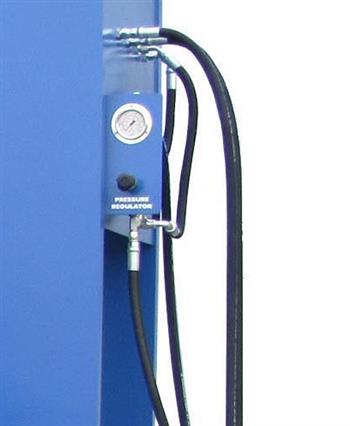More than three-quarters of all failures for hydraulic and lube oil systems are directly tied to contamination. Preventing the problem will save you money on repairs and equipment replacement and by reducing downtime from damaged machinery.
What contamination does
Hydraulic fluid is the lifeblood of equipment like the hydraulic press. The four functions of fluid are:
-
medium for transmitting energy
-
lubrication for all moving parts
-
method of transferring heat
-
sealant for gaps between the moving components
Contamination interferes with each of these four essential functions. That is why regular scheduled maintenance of your hydraulic fluid system is essential to keep production moving. If you use a C frame press or an H frame press, you know how expensive the machinery is. Following a routine for preventive care can add years to its lifespan.
Hydraulic fluid in
hydraulic shop presses protects the complex parts by lubricating them. Since it is thick enough to fill all the gaps between parts, each component is protected and they need to be replaced less often. Contamination prevents the fluid from acting as an effective barrier to wear, resulting in the need for replacing parts.
Types of contamination
There are two main types of contamination that can affect the workings of your machinery, according to Press Master, a major
hydraulic press manufacturer. The first is particulate contamination, caused by tiny solid fragments, and the second is water contamination.
There are two types of particulate contaminants:
-
Slit contamination is the gradual buildup of particles of microscopic size. It will cause machinery and parts to fail over time.
-
Chips are slightly larger, though also extremely tiny. The problems they cause are felt right away, not in the long-term.
A further classification for both slit and chips is hard and soft. Hard particles can include silica, carbon and metal. Soft particles include rubber, fibers and microorganisms.
Water is considered a contaminant because it simply does not mix with hydraulic fluid. Emulsified water, which is in a free state, is anything above the saturation point of the fluid and usually has a milky color. Water in a dissolved state is equally damaging. Avoiding water in the fluid is essential if you want to avoid costly repairs.
Keeping it clean
To avoid or get rid of particulate contaminants, the equipment must be protected with spin-on filters fitting to the air breathers on the reservoir. Before startup, it helps to flush the system. Seals and wipers should be replaced regularly. Hoses and manifolds should be protectively capped during maintenance. Each time new fluid is put in, it should first be filtered.
To prevent damage from water contamination, seals need to be replaced at the first sign of wear. All reservoirs should be checked for signs of leaks on a routine schedule. Controlling condensation will prevent water buildup. Heat exchangers need to be monitored for any indicators that a leak has occurred.
Taking the time to inspect, repair and maintain your hydraulic fluid systems will add years to the life of costly machinery. Regularly scheduled maintenance will pay for itself in less downtime, fewer repairs and equipment that last years longer.

